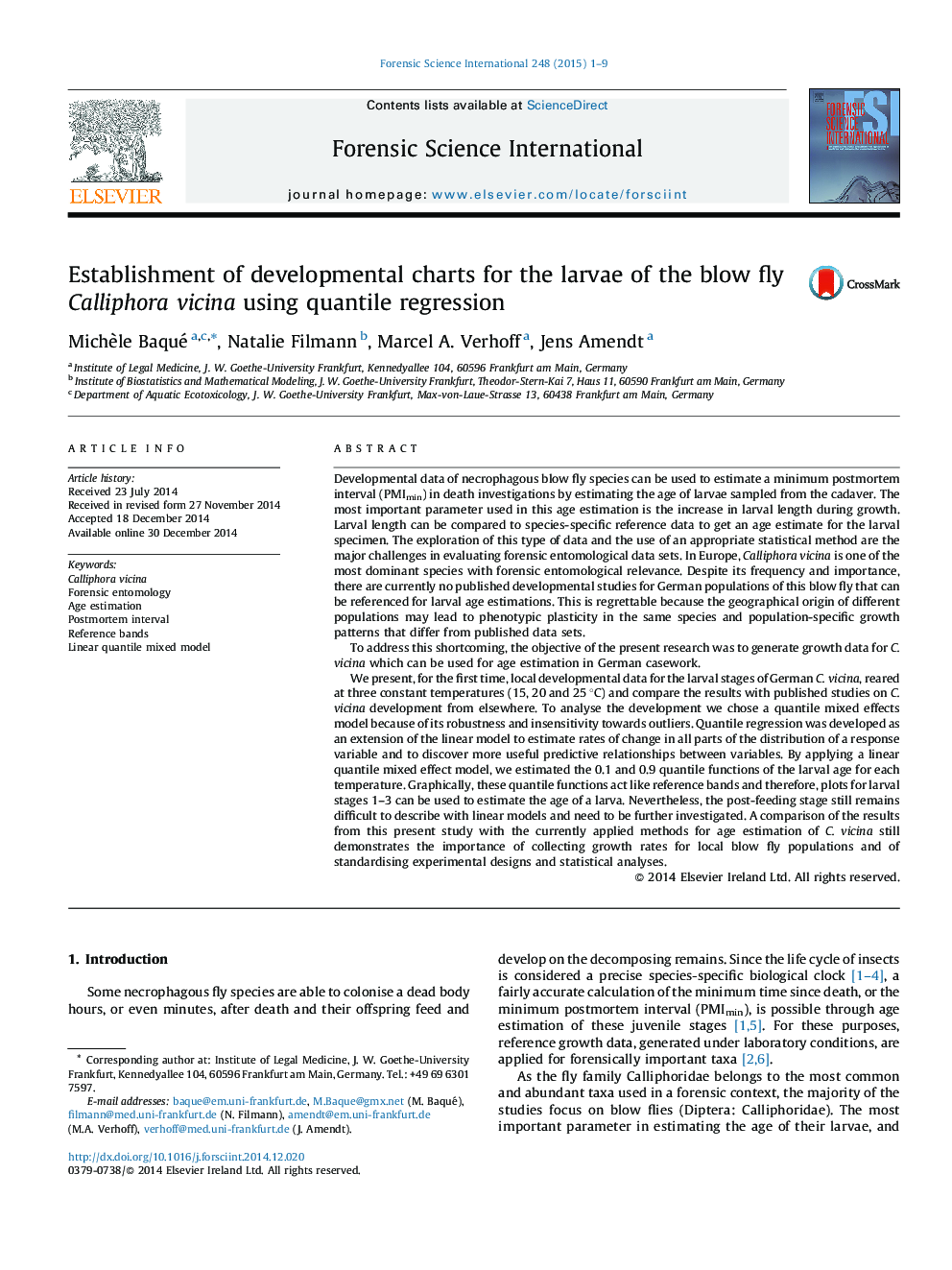| کد مقاله | کد نشریه | سال انتشار | مقاله انگلیسی | نسخه تمام متن |
|---|---|---|---|---|
| 95498 | 160433 | 2015 | 9 صفحه PDF | دانلود رایگان |

• We present for the first time local development data for the larval stages of a German C. vicina population.
• A complex linear quantile mixed effect model was used.
• We use 0.1 and 0.9 quantile functions to construct a 80% reference interval.
• Generated plots for larval stages 1–3 can be used to estimate the age of a larva.
Developmental data of necrophagous blow fly species can be used to estimate a minimum postmortem interval (PMImin) in death investigations by estimating the age of larvae sampled from the cadaver. The most important parameter used in this age estimation is the increase in larval length during growth. Larval length can be compared to species-specific reference data to get an age estimate for the larval specimen. The exploration of this type of data and the use of an appropriate statistical method are the major challenges in evaluating forensic entomological data sets. In Europe, Calliphora vicina is one of the most dominant species with forensic entomological relevance. Despite its frequency and importance, there are currently no published developmental studies for German populations of this blow fly that can be referenced for larval age estimations. This is regrettable because the geographical origin of different populations may lead to phenotypic plasticity in the same species and population-specific growth patterns that differ from published data sets.To address this shortcoming, the objective of the present research was to generate growth data for C. vicina which can be used for age estimation in German casework.We present, for the first time, local developmental data for the larval stages of German C. vicina, reared at three constant temperatures (15, 20 and 25 °C) and compare the results with published studies on C. vicina development from elsewhere. To analyse the development we chose a quantile mixed effects model because of its robustness and insensitivity towards outliers. Quantile regression was developed as an extension of the linear model to estimate rates of change in all parts of the distribution of a response variable and to discover more useful predictive relationships between variables. By applying a linear quantile mixed effect model, we estimated the 0.1 and 0.9 quantile functions of the larval age for each temperature. Graphically, these quantile functions act like reference bands and therefore, plots for larval stages 1–3 can be used to estimate the age of a larva. Nevertheless, the post-feeding stage still remains difficult to describe with linear models and need to be further investigated. A comparison of the results from this present study with the currently applied methods for age estimation of C. vicina still demonstrates the importance of collecting growth rates for local blow fly populations and of standardising experimental designs and statistical analyses.
Journal: Forensic Science International - Volume 248, March 2015, Pages 1–9